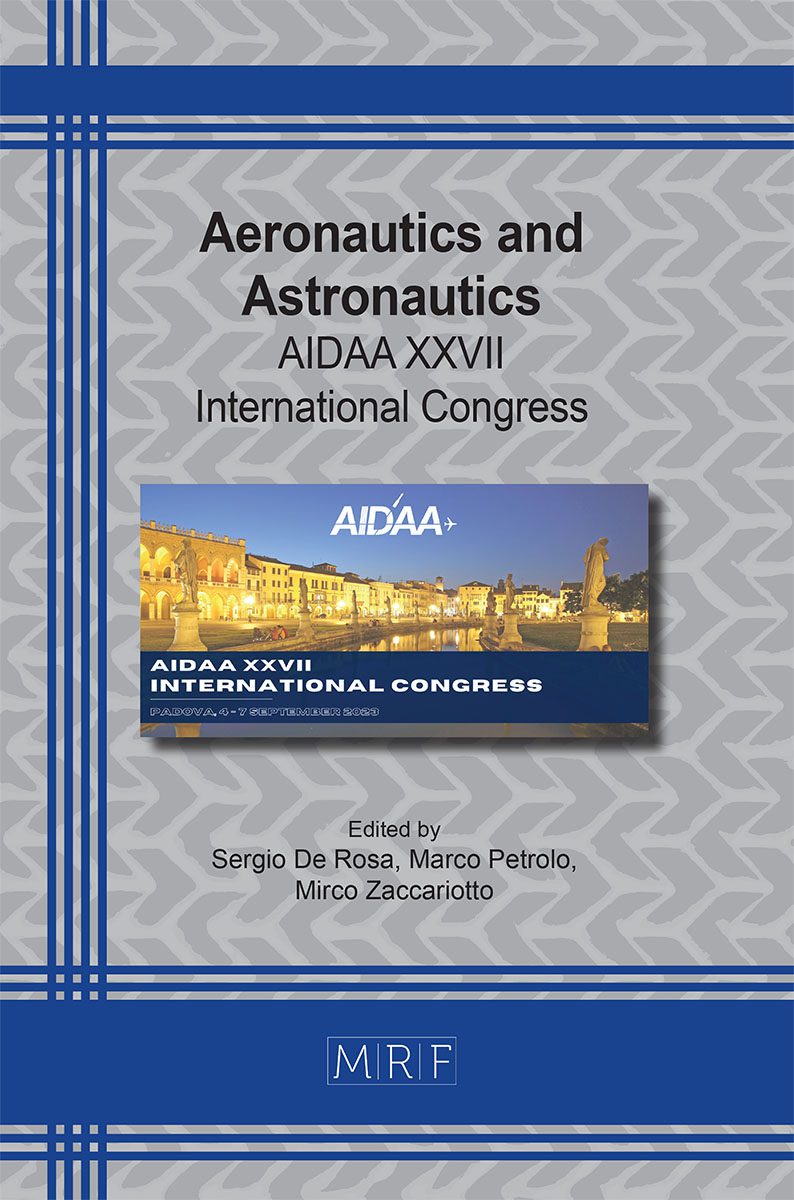Preliminary design of a CubeSat in loose formation with ICEYE-X16 for plastic litter detection
Francesca Pelliccia, Raffaele Minichini, Maria Salvato, Salvatore Barone, Salvatore Dario dell’Aquila, Vincenzo Esposito, Marco Madonna, Andrea Mazzeo, Ilaria Salerno, Antimo Verde, Marco Grasso, Antonio Gigantino, Alfredo Renga
download PDFAbstract. Every year, more than 14 million metric tons of plastic are estimated to enter rivers, lakes, and seas [1], becoming one of the main sources of pollution with significant economic and ecological impact on sensitive habitats, welfare, and vulnerable, endangered species. In this context, keeping track of plastic litter hot-spots and their evolution in time – both in open sea and coastal areas – becomes of fundamental importance. Plastic detection from space is at an early stage and, although some interesting capabilities have been demonstrated by multi-spectral imagery, hyperspectral sensing, and GNSS reflectometry, such technologies do not yet allow for the operational detection and monitoring of plastic from space on a global scale, with sufficient temporal and spatial coverage. The characteristics of Synthetic Aperture Radar (SAR) imagery would represent a keystone to realize almost continuous global monitoring of plastic litter at sea, but robust and reliable approaches for SAR-based plastic detection at sea are not available. The main problem is the lack of a large and assessed dataset to train and test new procedures and methods (e.g., deep learning) on large scales. Starting from this point, CROSSEYE (Combined in pendulum Remote Observation cubeSat System for icEYE) mission is presented with the objective to generate a wide dataset of multi-spectral and SAR images collected at the same time over the same areas. Plastic detection in multi-spectral images is mature enough to be used as a ground truth to cue SAR-based algorithms that autonomously perform the same task. CROSSEYE exploits a pre-existing SAR satellite belonging to ICEYE constellation – ICEYE-X16 – and completes it with an additional multi-spectral camera equipped on a 6U CubeSat. The results coming from the preliminary design of CROSSEYE demonstrate the feasibility of a mission capable of detecting plastic debris from space by using state-of-the-art technologies.
Keywords
Plastic Detection from Space, Multispectral/SAR Database, CubeSat Mission
Published online 11/1/2023, 4 pages
Copyright © 2023 by the author(s)
Published under license by Materials Research Forum LLC., Millersville PA, USA
Citation: Francesca Pelliccia, Raffaele Minichini, Maria Salvato, Salvatore Barone, Salvatore Dario dell’Aquila, Vincenzo Esposito, Marco Madonna, Andrea Mazzeo, Ilaria Salerno, Antimo Verde, Marco Grasso, Antonio Gigantino, Alfredo Renga, Preliminary design of a CubeSat in loose formation with ICEYE-X16 for plastic litter detection, Materials Research Proceedings, Vol. 37, pp 483-486, 2023
DOI: https://doi.org/10.21741/9781644902813-106
The article was published as article 106 of the book Aeronautics and Astronautics
![]() Content from this work may be used under the terms of the Creative Commons Attribution 3.0 license. Any further distribution of this work must maintain attribution to the author(s) and the title of the work, journal citation and DOI.
Content from this work may be used under the terms of the Creative Commons Attribution 3.0 license. Any further distribution of this work must maintain attribution to the author(s) and the title of the work, journal citation and DOI.
References
[1] Information on https://www.iucn.org/resources/issues-brief/marine-plastic-pollution
[2] Information on https://www.un.org/Depts/los/convention_agreements/texts/unclos/part2.htm
[3] Savastano S. et al., A First Approach to the Automatic Detection of Marine Litter in SAR Images Using Artificial Intelligence, IEEE International Geoscience and Remote Sensing Symposium IGARSS (2021) 8704-8707. https://doi.org/10.1109/IGARSS47720.2021.9737038
[4] Information on https://sdgs.un.org/goals/goal6
[5] Information on https://sdgs.un.org/goals/goal14
[6] Biermann L. et al., Finding Plastic Patches in Coastal Waters using Optical Satellite Data, Sci Rep 10, 5364 (2020). https://doi.org/10.1038/s41598-020-62298-z
[7] Hu C., A novel ocean color index to detect floating algae in the global oceans”, Remote Sensing of Environment 113 (2009) 2118-2129. https://doi.org/10.1016/j.rse.2009.05.012
[8] Morales – Caselles C. et al., An inshore-offshore sorting system revealed from global classification of ocean litter, Nature Sustainability 4 (2021) 484-493. https://doi.org/10.1038/s41893-021-00720-8
[9] D’Errico M. et al., Relative Trajectory Design, Distributed Space Missions for Earth System Monitoring. Space Technology Library 31 (2019).
[10] Fasano G., Space Flight Dynamics lectures University of Naples Federico II (2022).
[11] The CubeSat Program, CubeSat Design Specification (1U – 12U) – Revision 14.1 (2022).












